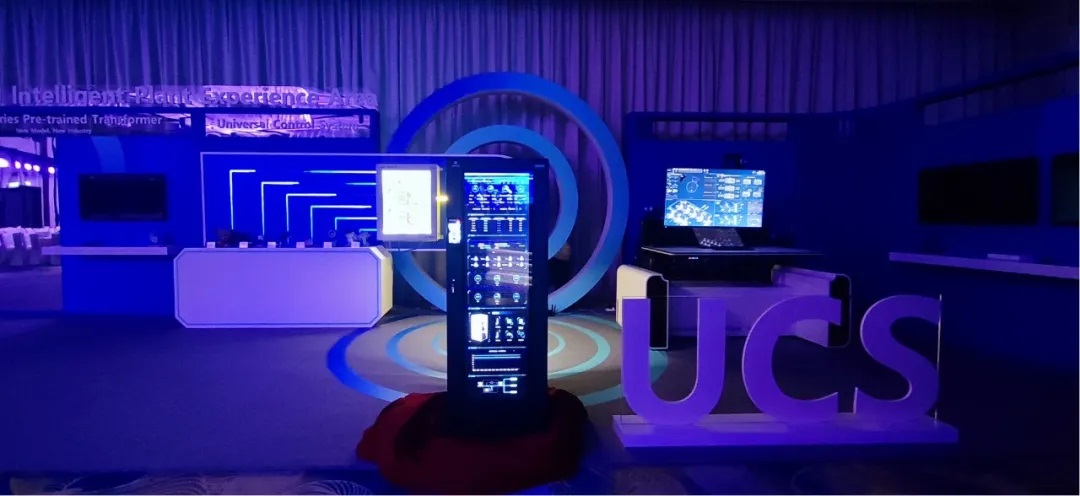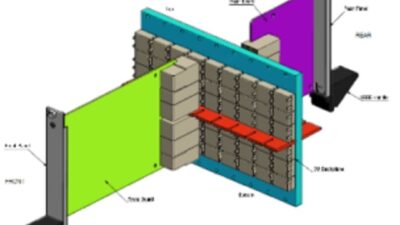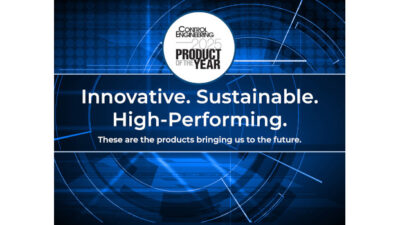Control Engineering China analysis: What is a universal control system (UCS), and should it replace distributed control systems for future process control applications? What are UCS advantages?

Learning Objectives
- See examples of how distributed control systems aren’t evolving quickly enough to meet the needs of process control applications, including two DCS challenges for modern process control.
- Understand how process control architecture design needs to return to core control system needs with the universal control system (UCS).
- Learn how decoupling software and hardware and integrating cloud capabilities help UCS meet modern process control needs, including integration of advanced physical layer (APL) Ethernet communications.
Universal control system insights
- Traditional distributed control systems aren’t evolving quickly enough to meet the needs of process control applications; see two DCS challenges for modern process control.
- Process control architecture design needs to address core control system needs and can do so with the universal control system (UCS).
- Decoupling software and hardware and integrating cloud capabilities help the UCS meet modern process control needs, including integration of advanced physical layer (APL) Ethernet communications.
The distributed control system (DCS) has a history of nearly 50 years since its birth in 1975. The DCS has become an indispensable automated control system for process industry to optimize precise process control applications, improve production safety and achieve upgrades adding intelligence and digital capabilities.
Over the years, incremental improvements to DCS platforms have continued. Due to specific application needs, many manufacturers have been afraid and unwilling to make big changes in DCS capabilities. The DCS principles, architecture, design concepts and control modes have never been radically changed, perhaps because of risk aversion or comfort with the status quo.
Evolution of DCS for process control applications
Today’s rapid rise of new generation information technologies, such as big data, cloud computing, internet of Things, artificial intelligence (AI), and others, accelerates transformation in many industries and brings the challenge of technological integration for automation control systems. These changes have given the DCS an opportunity to achieve a “qualitative change” and open a new chapter of process control in process industries.
Recently, Supcon Technology [Hangzhou, China] released a new Universal Control System (UCS), Nyx, said to be the first transformational innovation for a DCS in almost 50 years. What kind of product is it? Will it replace traditional DCS platforms?
Two DCS challenges for modern process control
In the era of digital intelligence, DCS is good, but not good enough. With the continuous complex developments in process industries, industrial process control demands new and higher requirements for the collection, transmission and data conversion of a large number of field signals. Process control systems also require accuracy, reliability, management and control integration and intelligence. However, it is difficult for traditional DCS platforms to meet these requirements, mainly for two reasons:
-
Lack of openness: Each manufacturer tightly binds its own proprietary hardware and software system; once a certain manufacturer’s DCS is selected, it is necessary to “stay with them to the end,” making it very difficult to maintain, upgrade and manage the lifecycle of the proprietary hardware.
-
Poor interoperability: Many standards for DCS fieldbus include eight kinds of IEC 61158 international standards, resulting in poor interoperability and unavoidable “data islands.”
In addition, considering users’ needs, DCS has limited capabilities to meet digital intelligence requirements because of limited computational powers, analog signal transmissions, fieldbus transmissions, transmission bandwidth, speed, accuracy and other areas. Extensive use of analog instruments and fieldbus instruments necessitates a large number of I/O cards, gateways, wiring and communication cables on-site, leading to problems such as long engineering cycles, high installation costs and difficult maintenance.
Begin with architecture design; return to core control system needs
Due to historical limitations, traditional DCS cannot meet the needs of the new era. In the early days, the fieldbus control system (FCS), considered an inevitable DCS substitute, was not accepted by most users, and the fieldbus only existed as a bus network of DCS. Today, the process industry market expects a new generation of process control systems that are more advanced, versatile and intelligent, incorporating the latest technologies to help the industry advance toward digitization and intelligence.
Fortunately, advances in new technology have paved the way for the design of control systems to return to their essence (sensing, connecting and computing).
The UCS released by Supcon Technology is based on this concept, adopting the minimalist architecture of “cloud-network-end,” comprising a control data center, all-optical industrial network and on-site intelligent equipment:
-
The control data center is equivalent to the brain of the UCS, responsible for the program running, data processing and analysis, control management and other tasks of the UCS. The difference is that it does not have to be deployed with dedicated controller hardware, but with a common IT infrastructure and mature cloud technology. Being software-defined means that the size and capacity of resources can be automatically adjusted according to demand, enabling an elastic and scalable supply of arithmetic power. The control data center is also equipped with NyxOS, a cloud-based real-time operating system designed for industrial real-time control, which provides a safe and reliable environment for running real-time control tasks. In addition, the redundant and distributed deployment architecture ensures high availability and fault tolerance of the control system.
-
An all-optical industrial network refers to the use of optical fiber connection between the control data center and the field equipment. The field data directly reaches the control data center at 10Gbps speed and parallel redundancy, which can save over 80% of cables and space.
-
The field intelligent equipment is the sensor, actuator and field instrument part of UCS. In UCS, Supcon adopts the field connection technology based on Ethernet-APL (Ethernet advanced physical layer), supporting Zone 2 intrinsically safe explosion-proof field connection boxes and APL modules, achieving IP-based instrumentation and improving communication rates by over 100 times.
It is evident that, compared to the traditional DCS architecture, the “cloud-network-end” three-tier structure of UCS opens a new chapter in the development of DCS control systems, holding extraordinary significance for the new era.

Open software definition, prime time for UCS has arrived
Software-defined, fully digital and cloud-native technologies are the current trends in control technology and are the three inherent characteristics of UCS. Process industries have high demands, requiring “safe, stable, long-lasting and excellent,” control system capabilities. If you can’t generate these benefits for enterprise, it is all meaningless. Software-defined, fully digital and cloud-native technologies are characteristics that enable UCS to significantly reduce enterprise costs, reduce cabinet room space by 90%, cable costs by 80% and shorten the construction cycle by 50%.
Extremely simple UCS architecture brings unprecedented changes to the control system. It breaks the constraints of the traditional physical controller, I/O module and cabinet group. UCS also overcomes the limitations of traditional DCS systems, which are closed, dedicated, hierarchically rigid and have limited computing power. As a result, the control system no longer requires a large number of control cabinets, providing significant, obvious benefits for users.
At the development level, as reflected in the “U” (universal) of UCS (universal and open), UCS decouples software and hardware. The software system does not need to be customized and developed according to the hardware, but can use programming languages commonly used by IT personnel. This reduces the difficulty of development, operation and maintenance, aligning well with the trend of accelerating IT/OT technology integration.
At the application level of technology convergence, the control data center of UCS is based on private cloud deployment, providing inherent advantages for introducing the latest IT technology. Ecosystem partners can develop cloud-native apps based on a common platform to realize rich functionalities. It would be difficult for a traditional DCS to integrate these technologies in the control layer.
APL Ethernet integration for UCS
In the era of digital intelligence, Ethernet advanced physical layer (APL) has become the best choice for field instruments and actuators with large amount of data. Supcon has long been aware of the APL development trend. APL-based field equipment brings a digital-signal transmission mode to UCS. APL based on Ethernet can achieve 10Mbps high bandwidth and 1000-meter long-distance communication and provide data transmission and power supply for field equipment, meeting explosion-proof design specifications. APL instruments can replace 4-20mA and HART instruments, eliminating the I/O card for analog-to-digital conversion.
Stone Shi is executive editor-in-chief, Control Engineering China. Edited by Mark T. Hoske, editor-in-chief, Control Engineering, WTWH Media, [email protected].
KEYWORDS: Universal control system, UCS, next-generation DCS
CONSIDER THIS
Benefits of open, interoperable process control systems are being touted globally.
ONLINE
www.controleng.com/international
Control Engineering continues to monitor trends in open process automation systems. The following article explains savings and advantages. “New cost analysis: Open process automation saves 52% versus DCS.” The article states: “While COPA projects 52% hardware and software savings from open process automation, O-PAS interoperable OPAF-aligned products are in field trials, devices are being tested, an adoption guide is underway and system integrators are preparing use of open controls, as explained at the 2024 ARC Leadership Forum. Lifecycle costs are measured at half of a distributed control system over 25 years.”



